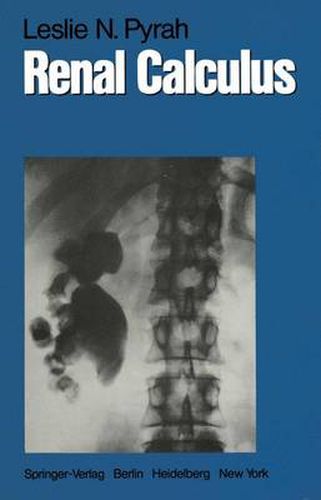Readings Newsletter
Become a Readings Member to make your shopping experience even easier.
Sign in or sign up for free!
You’re not far away from qualifying for FREE standard shipping within Australia
You’ve qualified for FREE standard shipping within Australia
The cart is loading…






This title is printed to order. This book may have been self-published. If so, we cannot guarantee the quality of the content. In the main most books will have gone through the editing process however some may not. We therefore suggest that you be aware of this before ordering this book. If in doubt check either the author or publisher’s details as we are unable to accept any returns unless they are faulty. Please contact us if you have any questions.
Stone in the urinary tract has fascinated the medical profession from the earliest times and has played an important part in the development of surgery. The earliest major planned operations were for the removal of vesical calculus; renal and ureteric calculi provided the first stimulus for the radiological investigation of the viscera, and the biochemical investigation of the causes of calculus formation has been the training ground for surgeons interested in metabolic disorders. It is therefore no surprise that stone has been the subject of a number of monographs by eminent urologists, but the rapid development of knowledge has made it possible for each one of these authors to produce something new. There is still a technical challenge to the surgeon in the removal of renal calculi, and on this topic we are always glad to have the advice of a master craftsman; but inevitably much of the interest centres on the elucidation of the causes of stone formation and its prevention. Professor Pyrah has had a long and wide experience of the surgery of calculous disease and gives us in this volume something of the wisdom that he has gained thereby, but he has also been a pioneer in the setting up of a research department largely concerned with the investigation of this complex group of disorders, so that he is able to present in terms readily intelligible to the general medical reader the results of extensive biochemical investigation in this area.
$9.00 standard shipping within Australia
FREE standard shipping within Australia for orders over $100.00
Express & International shipping calculated at checkout
This title is printed to order. This book may have been self-published. If so, we cannot guarantee the quality of the content. In the main most books will have gone through the editing process however some may not. We therefore suggest that you be aware of this before ordering this book. If in doubt check either the author or publisher’s details as we are unable to accept any returns unless they are faulty. Please contact us if you have any questions.
Stone in the urinary tract has fascinated the medical profession from the earliest times and has played an important part in the development of surgery. The earliest major planned operations were for the removal of vesical calculus; renal and ureteric calculi provided the first stimulus for the radiological investigation of the viscera, and the biochemical investigation of the causes of calculus formation has been the training ground for surgeons interested in metabolic disorders. It is therefore no surprise that stone has been the subject of a number of monographs by eminent urologists, but the rapid development of knowledge has made it possible for each one of these authors to produce something new. There is still a technical challenge to the surgeon in the removal of renal calculi, and on this topic we are always glad to have the advice of a master craftsman; but inevitably much of the interest centres on the elucidation of the causes of stone formation and its prevention. Professor Pyrah has had a long and wide experience of the surgery of calculous disease and gives us in this volume something of the wisdom that he has gained thereby, but he has also been a pioneer in the setting up of a research department largely concerned with the investigation of this complex group of disorders, so that he is able to present in terms readily intelligible to the general medical reader the results of extensive biochemical investigation in this area.